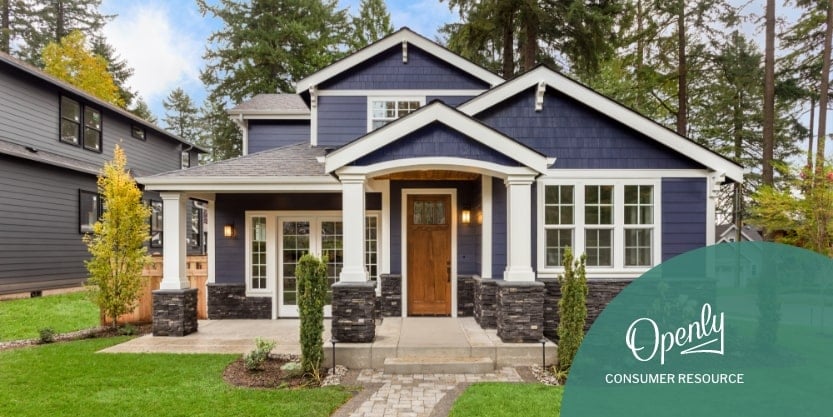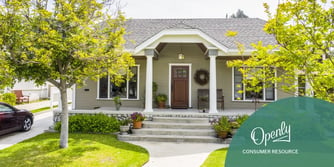Your home is likely one of your most significant assets, making safeguarding it against unforeseen circumstances paramount. Home insurance, specifically a homeowners insurance policy like the HO-5, is a vital protection tool that provides peace of mind for homeowners.
An HO-5 insurance policy provides broader coverage compared to other standard policies. Unlike other homeowners insurance policies, an HO-5 policy covers a wide range of risks due to its high coverage limits. This means that you'll be protected from losses unless your policy explicitly states otherwise.
Open-peril coverage provides comprehensive protection, reducing gaps that may occur with other limited policies. Covered perils typically include fire, lightning, windstorm and hail, theft, vandalism, and more.
HO-5 policies typically offer higher coverage limits than standard (HO-3) insurance policies, as well as replacement cost coverage. This means that in the event of a covered loss, the policyholder has the financial protection to repair or replace their property at today's prices with the backing of their insurance provider.
At a glance:
- HO-5 policies are open-peril, which means they cover all perils unless explicitly excluded.
- HO-5 policies typically feature higher limits for both dwelling and personal property, ensuring your personal belongings are well protected.
- An HO-5 policy provides broader protection, making it an ideal choice for homeowners seeking peace of mind through comprehensive homeowners insurance policy coverage.
If you're new to home insurance or need a refresher on its fundamentals, our "Home Insurance 101 Guide" is the perfect starting point. This guide covers everything you need to know about protecting your home, from choosing the right policy to understanding your coverage options.

What is included in HO-5 coverage?
The coverage provided by an HO-5 insurance policy is extensive, providing a variety of insurance solutions. It protects your dwelling and personal belongings, and it provides personal liability coverage. Covered perils typically include fire, lightning, windstorm, hail, theft, vandalism, and more.
While specific details can vary between insurance providers, an HO-5 policy typically includes the following coverages:
- Dwelling coverage—Protects the structure of your home — including walls, roof, and attached structures — against covered perils.
- Other structures—Covers detached property like garages, sheds, or fences.
- Personal property—Covers your belongings — furniture, electronics, clothing — even when they’re outside your home.
- Loss of use—Covers additional living expenses (e.g., temporary housing, meals, transportation) if a covered peril forces you out of your home.
- Personal liability—Protects you if someone is injured on your property or you cause accidental damage to others’ property.
- Scheduled personal property—Add-on coverage for high-value items like jewelry, fine art, or collectibles that exceed standard limits.
- Personal liability—Protects you if someone is injured on your property or you cause accidental damage to others’ property.
- Medical payments—Covers guest injuries regardless of fault.
- Ordinance or law coverage—Pays to rebuild your home to current building codes after a covered loss.
Experience Peace of Mind with Openly
You deserve home insurance coverage that's straightforward and exceptional. Openly delivers the protection and confidence you need—so you can worry less and live more.
HO-5 vs HO-3: What's the difference?
Choosing the right homeowners insurance policy is critical to the protection of your home and personal belongings. Two of the most widely available homeowners insurance policies are HO-3 and HO-5. While both provide coverage for your dwelling, personal belongings, and liability, they differ in their scope and level of protection. Understanding how an HO-3 and HO-5 home insurance policy differ is key for homeowners seeking the best coverage tailored to their needs.
HO-3 insurance is the most popular type of homeowners insurance available and is suitable for a wide range of homeowners. An HO-3 policy will protect the dwelling itself against open perils, and personal belongings against a specific list of named perils. Named perils typically include events like fire, theft, vandalism, windstorms, and certain natural disasters.
The major differences between an HO-3 and HO-5 policy are the comprehensiveness of coverage and perils. The chart below provides a good example of the differences between a standard HO-3 policy and an HO-5 policy offered by Openly insurance.
For a deeper understanding of the differences between an HO-3 and HO-5 policy, and to decide which policy best suits your needs, check out our blog on HO-3 vs HO-5 insurance policies.
Why choose an HO-5 insurance policy
An HO-5 home insurance policy offers several advantages, including broader coverage, higher coverage limits, and replacement cost coverage. While other homeowners insurance policy types may provide adequate protection for some homeowners, HO-5 policies can offer a level of coverage that is unmatched.
With higher coverage limits, the open perils coverage provided by HO-5 policies means homeowners don't need to worry about whether or not a loss is potentially covered—as long as it's not listed as an exclusion. And higher coverage limits provide financial security if homeowners need to repair or replace their home and belongings after a covered loss.
HO-5 policies don’t have to cost an arm and a leg; while the average premium for an HO-3 policy in the United States is $1,438, the average HO-5 rings in at just $1,511.1 So if you're looking for maximum protection, an HO-5 insurance policy may be the ideal choice for your needs and budget.
To explore top-tier options for high-value home insurance, consider Openly’s offerings. Openly provides access to exceptional homeowners insurance solutions and connects you with independent agents to tailor your coverage precisely.
* We provide this information to help you understand insurance. Any coverage is subject to the terms of your policy. Please refer to your policy and declarations page for complete coverage details.
1 National Association of Insurance Commissioners. “Dwelling Fire, Homeowners Owner-Occupied, and Homeowners Tenant and Condominium/Cooperative Unit Owner’s Insurance Report: Data for 2021.” NAIC. Published December 2023. Accessed 5 March 2024. https://content.naic.org/sites/default/files/publication-hmr-zu-homeowners-report.pdf

About the Author
Alyssa Little | Senior Content Strategist
Alyssa is the Senior Content Strategist at Openly, collaborating with industry thought leaders to provide insightful and informative content in the home insurance space. With over 15 years experience in content marketing strategy, copywriting, and editing, Alyssa has refined her expertise through her work at such companies as Gartner, Nike, and Trupanion. Alyssa holds a BA in History from the University of Puget Sound and an MA in Museum Studies from Newcastle University.



